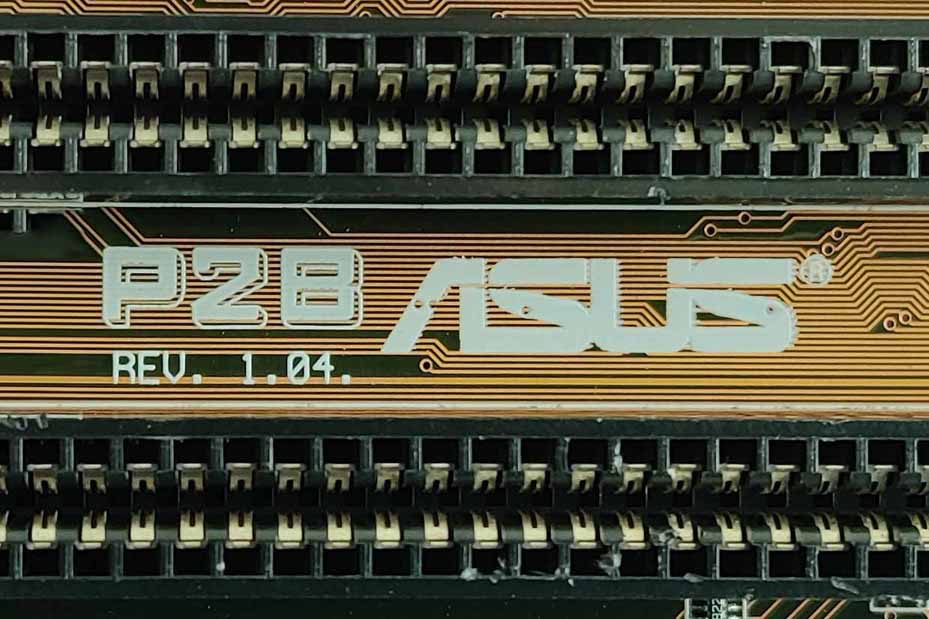Some time ago, someone offered me six P2B motherboards for restoration. Since I got them for a relatively good price, I didn’t mind taking them off their hands. Unfortunately, I wasn’t immediately able to work on the boards due to other projects that I thought were more interesting. Little did I know that those six boards may be more interesting than I thought!
Based on a document (Source: The Retro Web) allegedly released by ASUS, revision 1.04. boards may be fake (note the dot at the end of the revision number). Unfortunately, the document compares revision 1.04 with revision 1.10 – which does have its own set of differences, like support for lower voltages (Coppermine compatibility). I don’t know if my six boards are fake or real, but the document suggests they are indeed fake. According to ASUS, P2B REV 1.04 was last shipped on 29th December 1998. I do not know when my boards were shipped back then; however, each board PCB has a manufacturing date:
All PCBs were made in November 1998 (for instance: 9846 = 46th week in 1998). Surprisingly, PCBs made in the 47th week use a different format for the number code. Could it be that these two boards were made in different factories? Or was there a competing group of counterfeiters involved?
The document continues to point out differences in packaging and serial numbers. However, none of which I can verify because I do not have any retail box, nor do I know the proprietary encoding rules of ASUS. The document states that serial numbers starting with “8D” are fake – my serial numbers all begin with “8C”:
Finally, there are a few points regarding the PCB solder mask, board component layout, and missing jumpers. However, this is explainable since the document compares revision 1.10 to revision 1.04. It would have been better to compare a real ASUS P2B 1.04 versus a fake 1.04 – unless revision 1.04 has never been officially made or shipped by ASUS. That would make all revision 1.04 boards counterfeits.
Even though I am not entirely certain to have six counterfeit boards, indicators suggest they are. However, there are many other possibilities as to why those boards exist. It could even be that they are genuine boards from ASUS – just without their blessing. A fallout between ASUS and one of its suppliers? Old stock that didn’t make it on shelves on time before a newer revision launched? Whatever it was, we may never know what really happened.
The boards are in poor condition due to corrosion, broken traces, and cosmetic issues. Spending time on those boards may not be in relation to their economic value; however, I will still try to restore as many of the six boards as possible. In the end, I want to create some exciting videos and hope you will enjoy the journey of the challenge ahead.

